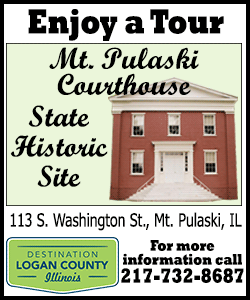|
 The first proposed change centered on the process for conducting
a hearing to amend the zoning map or to amend the language. The first proposed change centered on the process for conducting
a hearing to amend the zoning map or to amend the language.
The discussion for this matter began last month at the previous ZBA
hearing, but a vote could not be taken due to a lack of quorum for
the Regional Planning Commission, and thereby no recommendation.
Process for conducting a hearing to amend the zoning map or to
amend the language
This month, the night before the ZBA hearing, the Regional Planning
Commission lent unanimous approval recommending the changes in
language to the process for conducting a hearing to amend the zoning
map or to amend the language.
The reason for the changes zoning officer Will D’Andrea explained,
is that the current language can be very confusing and vague in
referencing other areas of the ordinances.
Changes in the proposed language also include an increase in the
amount of time required to notify nearby landowners from fifteen
days (the state minimum) to twenty-five days; and using state
language under the section concerning protest petitions.
A citizen, landowner and lawyer, Douglas Muck, was present at both
the Regional Planning Commission meeting and the ZBA hearing.
 On the matter time and distance of the zoning notification process,
he was curious as to why the county would adopt an ordinance that
was different from the state statute in terms of notification
requirements for time and distance (for Special Districts). “I don’t
see it causing great harm, but it does not mirror state law, and I
don’t really see a reason for it,” said Muck.
Muck said that the county would basically be taking the notification
requirements for granting variances and applying it to all rezoning
situations, and he does not see the need for such revision.
D’Andrea said that requiring longer amounts of time for giving
notice or sending notices to greater distances than the state
statute is legal, so long as they meet state minimums.
ZBA approves of changes to the process for conducting a hearing
to amend the zoning map or to amend the language
The ZBA members present voted on the first set of revisions, and
approved the changes unanimously.
M-3 extraction designation
The second set of potential revisions concerns the M-3 extraction
designation. Currently, permitted uses for M-3 include “sand,
gravel, marl, clay, limestone, salt, coal extraction, and related
crushing processes,” as well as “oil and gas extraction.”
Under current conditional uses, “cement concrete or asphaltic
concrete mixing plants” is the only listed conditional use.
A proposed change to this section would be to add borrow pits to the
permitted uses, and to move all of the current permitted uses to
conditional uses.
Borrow pits would also be added as a permitted use under Agriculture
zoning.
Additionally, a grandfather clause of December 31st, 2014 would be
inserted into the language in order to allow existing extraction
designations to remain in effect.
According to D’Andrea these revisions were looked into around a
year-and-a-half ago, but were delayed due to pending legal matters.
The Planning Commission also voted on this matter the night before
with a vote of 5 - 4 in favor of recommending the revisions.
Don Ludwig of Elkhart was present at the hearing. Ludwig said he
thinks the potential revisions are a good idea, as it will provide a
degree of flexibility in the county board’s zoning decisions, rather
than a straight yes-or-no answer. “Things are never completely black
and white, and sometimes it’s necessary to allow for some
back-and-forth, or some conditional uses,” said Ludwig.
 Muck said he thinks the revisions are a bad idea. Muck said these
revisions would give too much power to conditions that are unrelated
to zoning.
Muck also said that extraction uses are all heavily regulated, and
the county should not try to force such conditions onto businesses
that already follow heavy state and federal rules. Additionally,
Muck said it should be the duty of the ZBA to research the
regulations for whatever industry is potentially looking to
determine what problems may arise ahead of time.
[to top of second column] |

“If it’s not something that’s regulated by other forms of
laws and statutes at a state level, federal level, or a local
level, then maybe it’s a conditional use item,” said Muck.
Muck also said there should be a county board member present at the
hearing to explain their reasoning as to why they want to change the
ordinance, but none of the proponents were present. Because of the
lack of explanation, Muck said he thinks the motion should be
tabled.
Muck said he believes it would be easier to create a set of
conditions applicable to all permitted uses. It could be created in
advance and placed under the permitted uses as a series of
regulations.
D’Andrea responded, saying it is impossible to know all of the
circumstances that might come up during a given application process,
as each application is different in some way. Muck also said that
the effective date clause that is proposed to be added would be
considered prohibited due to its retroactive nature. D’Andrea said
it would be an easy fix to change the wording to begin at the date
of adoption.
Muck also suggested creating a map that would show the extraction
areas in the county that have been grandfathered in under the
ordinance.
Muck also referred to language in the existing ordinances that read
“the conditional use will not be injurious to the use and enjoyment
of other property in the immediate vicinity for purposes already
permitted, nor substantially diminish property values in the
neighborhood.” Muck argued that this portion of the ordinance is too
vague and not objective, and the language would not be changed under
the proposed new ordinance.
Finally, Muck also said that the county needs to define the
parameters of a borrow pit, otherwise the lack of a solid definition
could lead to landowners taking advantage of the language when
digging for other materials.
ZBA member Brett Farmer said he would like to know the Zoning
Committee’s reasoning for these proposed changes.
 D’Andrea said he could summarize their reasoning, as he and the
Committee have worked on this for a year-and-a-half. D’Andrea said
the Committee wishes to set a higher standard for granting rezone
requests for extraction. A permitted use is simply a yes or no
answer, whereas a conditional use allows for the county to address
issues that come forward in public hearings. ZBA member Doug
Thompson said that while there are state or federal regulations in
place for extraction operations, not every potential issue is
covered. “There are local things outside of those state regulated
things that are sometimes brought up to the Zoning Board of Appeals.
We hear those and need to have some idea on how to work around those
things,” said Thompson.
Thompson also asked D’Andrea if he knew why concrete and cement were
already considered conditional uses, when the related processes are
not much different from other extraction. D’Andrea said he was not
sure, and it was always like that in the ordinance.
Vote fails 2 – 1 to recommend M-3 extraction changes adding
borrow pits to the permitted uses; and to move all current permitted
uses to conditional uses
The ZBA members present voted on a motion to recommend the second
set of changes. Only three members were present, and all three would
need to vote yes for a positive recommendation to move forward to
the county board. Only two members voted yes, with Farmer voting no,
and the motion failed.
ZBA members present at the meeting were Doug Thompson, chairman;
Judy Graff and Brett Farmer. Zoning Officer Will D'Andrea was also
present. Rick Sheley was absent.
[Derek Hurley] |